| You might like: The Old Carrollton Courthouse Photo Credits: First two images: Infrogmation @ Wikimedia.Commons The link to this page is: http://old-new-orleans.com/NO_Carrollton_Hotel.html Back to Old New Orleans Whispers - Home |
| Today's Carrollton neighborhood has been within the city limits so long, sometimes we forget that, at one time, it was a town unto itself. In fact, it was the seat of Jefferson Parish government from 1852 to 1874, when it was annexed by the city of New Orleans. The site has a long history: It was included in Le Sieur de Bienville's 1719 land grant and later became part of the well-known Macarty sugar plantation. It was, also, where Gen. Jackson had his headquarters before the Battle of New Orleans. In 1833, it was incorporated as the town of Carrollton, named after Major-General William Carroll, whose Tennessee militia camped in the area next to Jackson's headquarters in 1815 (by 1833, he had gone on to become governor of Tennessee). What is now a pleasant 20-minute streetcar ride from Canal Street to the bend in the river where St. Charles turns into Carrollton Avenue, was once a long journey into the suburban unknown -- so long, in fact, that sometimes the trip included an overnight stop midway at Sacred Heart Convent. That started to change when a rail line was chartered in 1833 to travel St. Charles Avenue from Canal Street to the town of Carrollton (the line that later became the St. Charles Avenue Streetcar line). It wasn't uncommon in those days for railroad companies to build resorts at the end of a line to encourage people to ride the train. The resort at the terminus of the St. Charles line was called Carrollton Gardens and came with a luxury hotel (illustrated above, ca. 1879), a racetrack and 4 acres of lush gardens. |
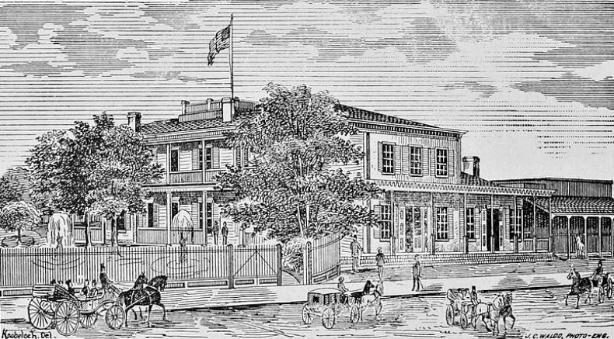
| The Old Carrollton Hotel |
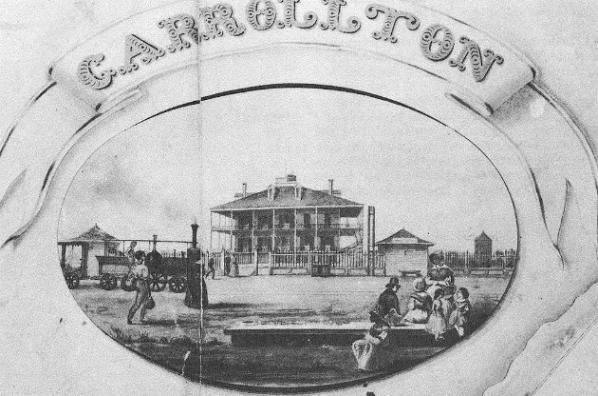
| An 1830's illustration showing the New Orleans & Carrollton Rail-Road Company's steam locomotive, with the Carrollton Hotel in the background and a family waiting on the platform. |
| The rail line established in 1833 is still going strong. The St. Charles Avenue Streetcar line is the oldest surviving interurban-urban passenger rail transportation system in the United States. The cars presently in service were brought to the line in 1924. |
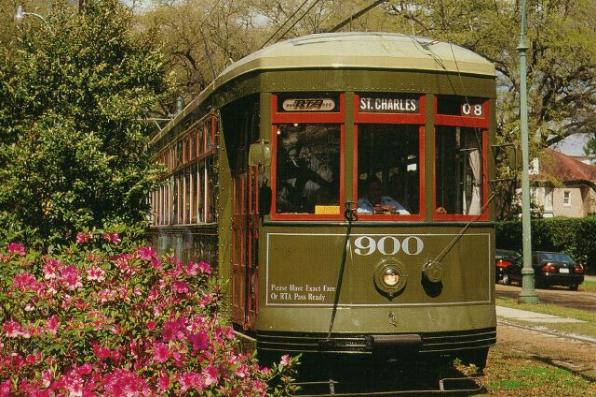
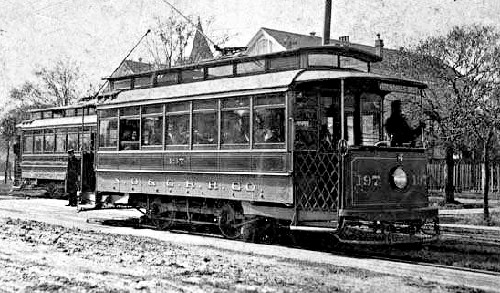
| Streetcar on Carrollton Avenue, 1901. It's a little hard to read, but it looks as if, at this time, the initials on the car still stand for New Orleans & Carrollton Rail-Road Company. |
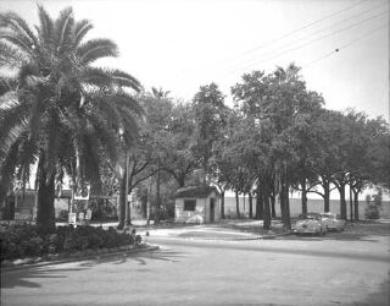
| This is a picture I found in an old scrapbook, the note on the back read: "Foot of Carrollton Avenue, Carrollton Gardens, 1956." It looks like nothing more than the neutral ground to me, but I wonder if this spot contained remnants of the original Carrollton Gardens. It would've been the right place, I believe, there by the bend in the river, where Carrollton turns into St. Charles. |